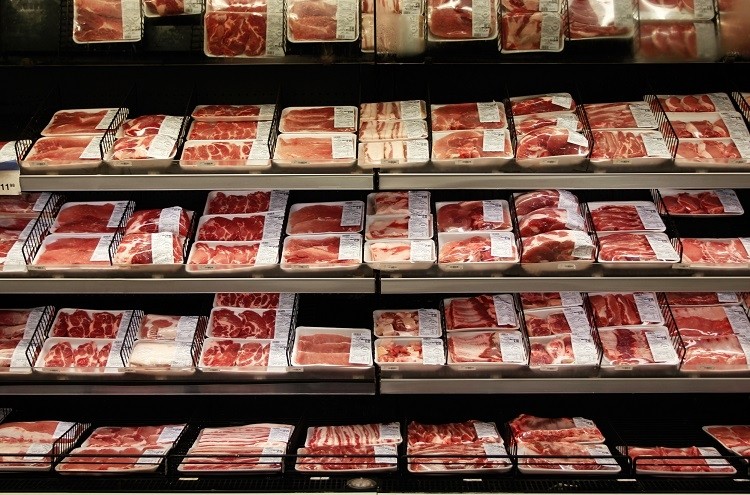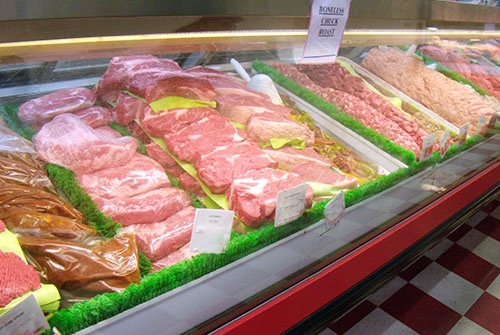Bagley Farms Meat Market Edwardsville IL: Your Best Location for Local Meat Selection
Bagley Farms Meat Market Edwardsville IL: Your Best Location for Local Meat Selection
Blog Article
Discover the Art of the Butcher's Cut in a Modern Meat Market
In the ever-evolving landscape of modern-day meat markets, the butcher's cut has actually transcended its typical origins, merging olden workmanship with contemporary methods. What absolutely establishes the contemporary butcher apart is their capacity to forge a much deeper connection in between consumers and the beginnings of their meat.
Development of Butchery Methods

The mid-20th century saw butchery strategies additionally fine-tuned by clinical understandings right into muscle mass biology and meat aging, boosting both tenderness and taste. Technologies like vacuum cleaner product packaging and refrigeration expanded item shelf-life, enabling butchers to diversify offerings and boost quality assurance. This period also noted the rise of specific equipment, such as band saws and meat slicers, which raised precision and effectiveness in meat processing.
The 21st century has actually introduced digital innovation into the butchery world. Digital systems now aid in monitoring pet provenance and maximizing cuts to fulfill details customer choices. Additionally, a resurgence in artisanal butchery has actually arised, blending typical skills with modern-day understanding to deal with consumers seeking honest and lasting meat options. This development highlights a dynamic interaction between tradition and technology, conference modern demands while protecting the craft's heritage.

Comprehending Meat Cuts

Recognizing the details of meat cuts is crucial for both butchers and consumers seeking high quality and worth. Each cut comes from a various component of the pet, imparting unique tastes, appearances, and cooking methods. Mastery of these differences not only enhances culinary experiences yet additionally makes the most of the energy of each carcass. For butchers, exact cuts reflect skill and regard for the craft, making certain minimal waste and optimal yield.
The main groups of meat cuts include primal, sub-primal, and retail cuts. Primitive cuts, such as the loin, rib, and chuck, are the big areas at first separated from the carcass. Butchers then break these down further right into sub-primal cuts, before lastly generating retail cuts offered to consumers, like ribeye or tenderloin. Each phase requires careful interest to anatomical framework and muscular tissue composition.
Comprehending muscle mass make-up is essential; muscular tissues used a lot more regularly by the pet have a tendency to be harder and are best suited for slow cooking techniques, while less-used muscles, like those discovered in the loin, are a lot more tender and ideal for cooking or roasting. Knowledge with these differences empowers customers to make educated selections, boosting their cooking ventures.
Picking Quality Meat
Selecting the best meat entails greater than simply picking a visually enticing item from the display. The art of selecting quality meat calls for a critical eye and important link understanding of specific characteristics that signify quality and quality. Pay attention to the shade; beef needs to have a bright, cherry-red tone, while lamb should show a soft pink tone, and pork a light pink. This indicates the meat is fresh and hasn't been revealed to oxygen for also lengthy.
Second of all, take into consideration the marbling, which describes the white streaks of fat within the muscle mass. Proper marbling is an essential indication of inflammation and taste, as it thaws throughout food preparation, enhancing the meat's juiciness. Bear in mind, higher marbling frequently associates with exceptional top quality cuts, such as USDA Prime.
Texture is one more essential aspect; meat needs to feel firm to the touch, not slimed or extremely soft. Additionally, bear in mind the fragrance. Fresh meat needs to have a tidy, neutral smell, cost-free from any type of sour or repulsive smells.
Coupling Cuts With Cooking Techniques
Efficiently coupling cuts of meat with the suitable food preparation techniques is essential for achieving optimal taste and structure. These methods improve the meat's all-natural tastes and make sure a juicy coating.
On the other hand, tougher cuts like brisket and chuck roast are rich in collagen, which damages down right into jelly when prepared slowly. These cuts are suitable for braising or sluggish roasting, enabling the meat to soften in time and create deep, intricate flavors. In a similar way, cuts such as brief ribs and pork shoulder get on well with slow-cooking techniques, i thought about this where expanded cooking times transform their durable textures into succulent meals.
Lamb shanks and oxtail, which call for long term cooking to tenderize, are best prospects for stewing or sluggish simmering. These methods coax out abundant, hearty tastes while maintaining moisture. By recognizing the one-of-a-kind qualities of each cut, cooks and home cooks alike can raise their cooking creations, making sure each dish is both pleasing and unforgettable.
The Butcher's Role Today
Navigating the progressing landscape of the contemporary meat market, the butcher's function today extends past mere preparation of cuts. Contemporary butchers are culinary craftsmens, instructors, and advocates for sustainable practices. They bridge the void in between the farm and the fork by guaranteeing ethical sourcing, understanding animal husbandry, and prioritizing openness in the supply chain. This shift shows the growing customer demand for top quality over amount, where provenance and pet well-being are critical.
Along with crafting specific cuts, butchers currently involve straight with clients, providing cooking advice and customizing choices to match specific demands and choices. Their know-how in meat aging, marbling, and flavor accounts equips customers to make enlightened choices, improving their culinary experiences. This individualized solution exemplifies the butcher's progressing role as a relied on expert in the kitchen area.
Furthermore, butchers are pivotal in lessening waste, utilizing entire animals to develop diverse items such as sausages and stocks - bagley farms meat market edwardsville il. This extensive technique not just appreciates the animal yet also lines up with contemporary sustainability objectives. This way, the modern butcher symbolizes both tradition and advancement, adapting to an ever-changing market while preserving the creativity and honesty of their craft

Conclusion
The contemporary butcher's craft elaborately weaves standard techniques with modern developments, highlighting sustainable practices and moral sourcing. Proficiency in recognizing varied meat cuts and high quality signs encourages butchers to supply enlightened referrals, aligning particular cuts with ideal cooking methods. This proficiency not just elevates culinary experiences but additionally enhances the link see this here between customers and the origins of their food. By recognizing historical methods while accepting modern demands, the butcher's role stays essential in today's innovative meat market.
Report this page